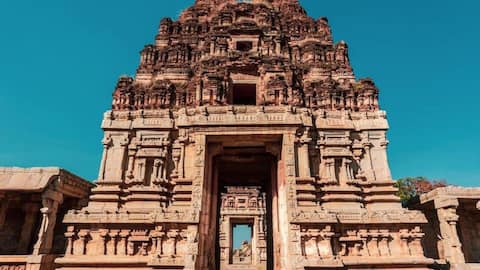Journeying through the UNESCO sites in South India
What's the story
Nestled in the heart of South India lies a treasure trove of cultural and natural wonders, each narrating stories of antiquity, architectural brilliance, and ecological diversity.
These UNESCO World Heritage Sites stand as a testament to the rich tapestry of history and heritage woven across the southern expanse of the Indian subcontinent.
Let us explore some of these iconic wonders.
Site 1
Monuments of Hampi
Once the capital of the vast Vijayanagara Empire, this city now represents the exquisite Dravidian architectural and artistic style and is recognized as a UNESCO World Heritage Site.
Despite being in ruins now, there are still breathtaking palaces, amazing temples, royal complexes, colossal gateways, exquisitely carved pillars, and more that inspire wonder, astonishment, and joy in everyone who sees them.
Site 2
Nilgiri Mountain Railway
The Nilgiri Mountain Railway, established by the British in Tamil Nadu, is the only meter gauge "rack railway" that is specifically made to manage extreme gradients. It was erected in 1908.
This historic "toy train" passes by verdant hills and shaded forests as it winds through charming bridges, tiny mountain tunnels, and breathtaking scenery in Ooty and Coonoor.
Site 3
The Western Ghats
These enormous mountain ranges, often referred to as the Western Ghats, Annamalai, Nilgiri, etc., were designated as World Heritage Sites by UNESCO in 2012.
It is highly prosperous, with plantations of tea, coffee, and other spices, and is home to a wide variety of indigenous flora and wildlife. It is located across Maharashtra, Karnataka, Kerala, and Tamil Nadu.
Site 4
Temples of Mahabalipuram
Constructed during the Pallava era in the 7th century AD, the Shore Temple is located in Mahabalipuram on the banks of the Bay of Bengal.
About 40 architectural wonders that date back to the 7th and 8th centuries can be seen in Mahabalipuram.
These are made of granite and are hewn with lion pilasters, rock reliefs, caves, and sculptures of Hindu gods and goddesses.
